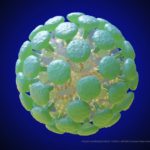Acting USDA Secretary Kevin Shea and Acting FDA Commissioner Janet Woodcock, M.D. have released a statement confirming that COVID-19 is not transmitted through food or food packaging. Back in September 2020, the International Commission on Microbiological Specifications for Foods (ICMSF) released an opinion paper stating the same result. At that time, ICMSF, "Despite the billions of meals and food packages handled since the beginning of the COVID-19 pandemic, to date there has not been any evidence that food, food packaging or food handling is a source or important transmission route for SARS-CoV-2 resulting in COVID-19." When the pandemic first started picking up steam about a year ago, many were concerned about products shipped from China, as well as the possibility of the virus … [Read more...]
ICMSF Opinion on Coronavirus and Food Safety: Not a Hazard
The International Commission on Microbiological Specifications for Foods (ICMSF) has released an opinion paper on the relationship of the novel coronavirus to food safety. In brief, the ICMSF opinion on coronavirus and food safety is: "SARS-CoV-2 should not be considered a food safety hazard since a true food safety hazard enters the human body with food via the gastro-intestinal (GI) tract, where it can infect organs/tissues elsewhere in the human body." SARS-CoV-2 is the technical term for the novel virus. COVID-19 is the name of the illness it cases. The "19" is used as an identifier since the virus was first discovered in 2019. The virus is spread through respiratory droplets and infects humans through the respiratory system. Many billions of meals have been consumed, and … [Read more...]
Study Identifies Hazardous Chemicals Used in Food Packaging
A new study published in Food Additives & Contaminants, Part A has found that 175 hazardous chemicals are used in food packaging in the United States and Europe. That packaging includes cans, pans, and foils. The chemicals are released into the food and you eat them. Some of the chemicals have been linked to chronic diseases such as cancer. Others are endocrine disruptors, interfere with the reproductive system, or cause mutations. Some of these chemicals accumulate in the body over time; they are called "persistent and bioaccumulative." Unfortunately, these chemicals can act at very low doses, and their toxicity can be increased when other hazardous chemicals are present. Food contact materials are a major source of long term and chronic exposure to chemicals. The study's … [Read more...]
FDA Keeps an Eye on Packaged Ice
A typical American consumer buys about four bags of packaged ice each year, usually during the summer months when 80 percent of packaged ice sales take place. But most people don't know that packaged ice is one of the many items that is regulated by the U.S. Food and Drug Administration (FDA). Although small-scale producers are exempt, larger producers must comply with FDA regulations and are subject to inspection. FDA inspectors make sure that packaged ice makers follow Current Good Manufacturing Practices such as producing, holding and transporting ice in clean and sanitary conditions; monitoring the cleanliness and hygiene of employees; using properly cleaned and maintained equipment, and using water that is safe and sanitary. FDA inspectors check plumbing design to make sure it … [Read more...]
Researchers Develop Antibacterial Cocoa-Based Film
Researchers at the Institute of Agrochemistry and Food Technology in Paterna, Spain have developed films containing flavonoid-rich cocoa that have antimicrobial applications. The film is made from ethylene-vinyl alcohol copolymer (EVOH) and could be used in the food packaging industry. It's the catechins in the cocoa extract that inhibits the growth of all the microorganisms tested. There were no differences in the effect between gram-negative and gram-positive bacteria, which have different structures. Gram-negative bacteria include E. coli and Salmonella; gram-positive bacteria include Staphylococcus and Streptococcus. The films were very effective at inhibiting the growth of Listeria monocytogenes in infant milk. In addition, when the films were exposed to aqueous food simulant, … [Read more...]
FDA No Longer Allows BPA in Infant Formula Packaging
The FDA has published a final rule amending the food additive regulations to no longer allow the use of bisphenol A (BPA) epoxy resins as coatings in packaging for infant formula. Although many consumer organizations have asked for this ban for years, the government is stressing that this action was taken "because these uses have been abandoned," and not because of health concerns. The document will be published in the Federal Register on July 12, 2013. A petition filed by Representative Edward Markey (D-MA) last year proposed to amend the regulations. Markey issued a press release stating that "this is a major victory for American families, and I join with parents in celebrating safer feeding time for their babies now that this toxic chemical will forever be banned from infant … [Read more...]
Scottish Ozone Machine Kills Food Poisoning Bacteria
Researchers in Scotland have invented a machine that uses the natural germ-killing properties of ozone to kill food-borne bacteria without using chemicals or requiring changes to current food packaging materials. When held against the surface of plastic or glass packaging, the device blasts oxygen molecules, temporarily turning them into ozone molecules which destroy the bacteria. After a few hours, the molecules revert back to oxygen molecules. The research team, which includes Dr Hugh Potts, Ian Muirhead and Dr Declan Diver, believes the device can also extend shelf life of products by a day. The product is bring brought to market by a University of Glasgow spinoff company called Anacail, the Gaelic word for shield. “We’re very excited about the applications of our product. It’s … [Read more...]










